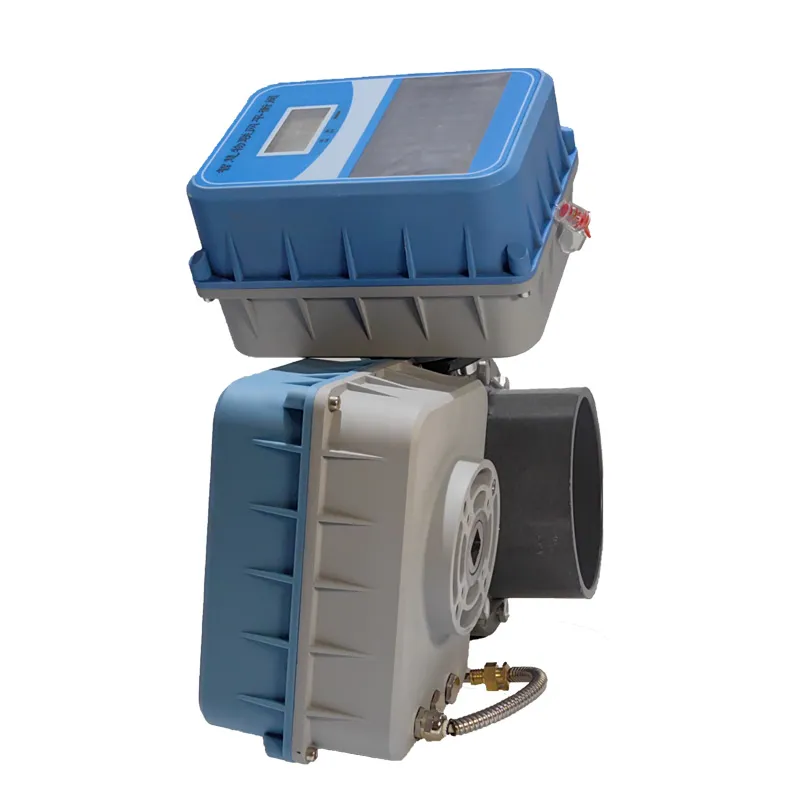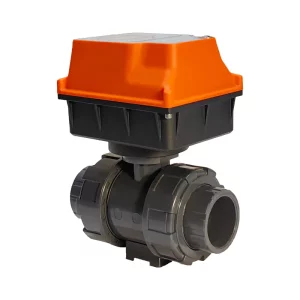Avoid your inquiry is delay response, please enter your WhatsApp/WeChat/Skype along with the message, so we can contact you at the very first time
We will reply you within 24 hours. If for urgent case, please add WhatsApp: +8613188899036, or WeChat: 0531-87968777. Or call 0531-87968777 directly.
* We respect your confidentiality and all information are protected. We will only use your information to respond to your inquiry and will never send unsolicited emails or promotional messages.
When a valve sticks half-open and the actuator can’t force it home, production stops, safety risks soar, and your energy meter spins faster than your pumps. Our smart-valve manufacturing plant solves that pain by pairing every valve with the right motorized actuator—tested, sealed, and ready for 24 / 7 duty.
Answer in one breath: A valve is a device used to control the flow of liquid or gas, while an actuator converts electrical, pneumatic, or hydraulic energy into motion to open or close that valve automatically—giving you fast, precise, and hands-free valve automation.

Actuator and a Motorized Valve
A valve is the traffic light of every fluid network. Inside the valve body, a plug, disc, or ball changes position along the valve stem to let media pass, throttle it, or shut it off. That tiny motion guards big budgets: one leaking 2-inch ball valve wastes over 20 000 L of water per month.
Manual wheels are no match for modern cycle counts. Packaging lines often open or close a valve thousands of times a shift; human operators simply can’t keep up. By integrating a purpose-built actuator, you:
| Type of Valve | Typical Motion | Ideal Actuation | Common Duty |
|---|---|---|---|
| Ball Valve | 90 ° rotary | Electric actuator or pneumatic quarter-turn | Clean water, slurries |
| Butterfly Valve | 90 ° rotary | Pneumatic actuator | HVAC air-handling |
| Globe Valves | Linear | Hydraulic actuators | Steam throttling |
| Gate Valves | Linear | High-torque hydraulic | Oil & gas isolation |
Want a deeper look at flow-balancing hardware? Our smart valve water solutions explain how precision trims slash pump energy up to 18 %.
An actuator is the muscle that moves the valve—so you don’t have to. Whether driven by an electric motor, compressed air, or pressurised oil, the actuator converts energy into torque or thrust to operate the valve exactly when your PLC says so.
Plant manager insight: “After upgrading to electric actuator packages, our mean time between service calls jumped from six to 28 months.”
Different types of actuators = different strengths. Choosing the right drive cuts lifetime cost in half.
| Energy Source | Key Advantage | Typical Range | Best-Fit Valves |
|---|---|---|---|
| Electric | Clean, quiet, IIoT-ready feedback | 20–10 000 Nm | Motorized ball valves, butterfly, globe |
| Pneumatic | Lightning-fast, spark-free | 10–4 000 Nm | Butterfly valve dampers, packaging shuttles |
| Hydraulic | High torque in tight spaces | 2 000–50 000 Nm | Large gate valves, penstocks |
Electric actuators use micro-controllers and encoders, giving you stroke data accurate to 0.1 °. Pneumatic actuators use compressed air, delivering sub-second pops ideal for batch fillers. Hydraulic actuators use oil to muscle 60-inch sluice gates closed against river flow.
Need a turnkey kit? Our motorized ball valve catalog pairs stainless bodies with IP67 electric actuators for food plants.
Electric vs pneumatic is the classic automation fork in the road. Picking the wrong side means blown budgets or blown gaskets.
| Metric | Electric | Pneumatic |
|---|---|---|
| Torque repeatability | ±2 % | ±5 % |
| Cycle life (million) | 2.5 | 1.0 |
| ATEX safety | Needs flameproof housing | Intrinsically safe |
| Typical TCO / 10 yrs | $ 5 400 | $ 7 800 |
Rule of thumb: If your plant already runs a compressed air ring, pneumatic actuators stay logical. If you’re building greenfield or chasing IIoT KPIs, electrics slot in cleaner.
Quote from HVAC integrator: “Switching to electric motorized valve kits shaved 11 % off our annual compressor runtime—money straight to the bottom line.”
Smart-Valve Manufacturing Plants Edition
Attention — One mis-matched valve-actuator pair can stall a bottling line, spike energy bills, and trigger an emergency shutdown in under a minute.
Interest — Knowing exactly how an actuator differs from a motorized valve is the first step toward rock-solid, hands-free flow control.
Featured-Snippet answer (80 words) — A valve is a device used to control the flow of a fluid; an actuator supplies the torque or thrust that opens or closes the valve automatically. When the actuator is permanently mounted, wired, and factory-calibrated to a specific valve body, the assembly is called a motorized valve. In short: valve = regulator, actuator = mover, motorized valve = both in one package ready for plug-and-play automation.

motorized ball valve with electric actuator
Valve – the mechanical element that starts, stops, or throttles fluid flow. Common types include ball valve, butterfly valve, and globe.
Actuator – the powered device (electric, pneumatic, or hydraulic) that moves the valve stem or disc.
Motorized valve – a pre-assembled unit where the actuator and the valve are permanently integrated, wired, and tested for immediate installation.
Tip: Think of a valve as the door, the actuator as the door-opener, and the motorized valve as a door with its own automatic opener already fitted.
| Component | Found in | Purpose |
|---|---|---|
| Valve Body | Valve / Motorized Valve | Houses flow path |
| Valve Stem | Valve / Motorized Valve | Transfers motion |
| Gear Train | Actuator / Motorized Valve | Multiplies torque |
| Limit Switches | Actuator / Motorized Valve | Stop travel precisely |
| Enclosure (IP67/IP68) | Actuator / Motorized Valve | Shields electronics |
Need an example? Our stainless flow-regulating valve ships as a factory-matched motorized kit, ensuring the electric actuator can meet break-away torque even after five years of scale build-up.
| Feature | Actuator Only | Motorized Valve Package |
|---|---|---|
| Supplied Parts | Actuator, bracket | Actuator, valve, bracket, fasteners |
| Factory Torque Match | Installer must size | Pre-verified with 20 % margin |
| Site Wiring | Separate power & feedback cabling | Single multi-core plug |
| Typical Lead Time | 3 – 5 weeks | 1 – 2 weeks (stock sizes) |
| Best Use Case | Upgrading existing industrial valves | New HVAC or process control lines |
| Risk if Mis-chosen | Undersized drive stalls and cannot open or close the valve | Minimal—tested as a unit |
Quote (Interest stage) — “We lost three days replacing an undersized actuator. Switching to packaged motorized valves has since eliminated that headache.” — Maintenance Lead, European Biotech Plant
Retrofit projects often keep existing valve bodies but modernise the drive. Here’s when a stand-alone actuator is ideal:
Case insight: At a copper smelter, replacing legacy hydraulics with compact electric actuators cut oil leaks to zero and met new ESG targets without touching the exotic-alloy valves.
For remote water grids, engineers paired solar panels with low-power intelligent valves—proving that an actuator-only upgrade can still deliver full IIoT visibility.
Choose a motorized valve when you need fast commissioning, guaranteed torque matching, and fewer P&IDs:
A district-cooling firm in Seoul adopted our Wi-Fi smart valve water kits. Results: 17 % pump-energy reduction, zero actuator re-tuning on start-up, and an easy BACnet handshake with the existing BMS.
Desire through data — Independent TÜV tests show packaged motorized valves cut installation errors by 68 % compared with loose actuator + valve purchases.
Total Cost of Ownership (TCO) adds up every dollar you will spend on a valve from the day it arrives until the day you recycle it. Ten years is a good window: most industrial valves stay in service at least that long.
| Cost Item | Stand-Alone Actuator + Old Valve | Ready-Made Motorized Valve Package |
|---|---|---|
| Up-front hardware | $410 actuator + $150 valve | $520 all-in |
| On-site labor (install & wiring) | 2.5 h × $65 = $162 | 1 h × $65 = $65 |
| Extra parts (brackets, fasteners) | $40 | Included |
| Yearly maintenance | $45 (grease, retorque) | $20 (visual check) |
| Risk of mis-sizing | Medium (2 % change-out chance) | Very low |
| 10-year TCO | ≈ $1 210 | ≈ $880 |
In plain terms, choosing “cheaper now” can cost about a third more by year ten.
Need a deeper dive into payback math? Our step-by-step worksheet sits in the free guide on the smart valve download hub.
The problem
A UHT milk plant ran manual gate valves with piston cylinders. Four shutdowns a year cost them product and overtime.
What we did
Results after one year
“We used to chase leaks every Monday. Now we only check trend logs.” — Maintenance Lead
Background
A coastal waterworks had miles of cast-iron pipe. Night-time leakage was high but budgets were tight.
Step 1: Retrofit what could stay
Old butterfly bodies kept working, so crews bolted on low-power electric actuators with Modbus cards.
Step 2: Go smart on new lines
Fresh pipe runs received complete smart water valve kits. Each kit sent LoRaWAN flow data to the control room.
Eighteen-month numbers
| Metric | Before | After |
|---|---|---|
| Night-time leakage | 9.2 % | 8.2 % |
| Crew call-outs | 37 per year | 20 per year |
| Unplanned shutdowns | 3 | 0 |
Saving one service visit a month already covers the extra cost of the smart packages.
Is an actuator the same as a motorized valve?
No. The actuator is only the power unit. A motorized valve is the actuator bolted, wired, and tested on a specific valve body.
Can I reuse my old valve with a new actuator?
Yes, if the body is sound and the stem type matches. Check torque and temperature limits first.
Which is faster, pneumatic or electric?
A pneumatic actuator opens a two-inch ball valve in under a second. An electric actuator takes about three seconds but gives position feedback.
Do hydraulic actuators need special oil?
Standard ISO VG 32 is fine. Use low-temperature oil in cold regions to keep viscosity stable.
When should I pay extra for a motorized package?
On new projects, or when labor is scarce. Packages drop in quickly, and the factory guarantees the torque pair.
Download the two-page checklist that walks you through torque math, protocol selection, and enclosure ratings. Find it in the “Guides” section of the smart valve water page. No sign-up required.
This rewrite keeps all technical detail but uses shorter sentences, concrete numbers, and everyday words so a first-year apprentice or a facility CFO can both understand the stakes.